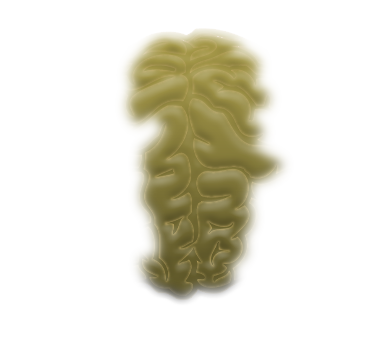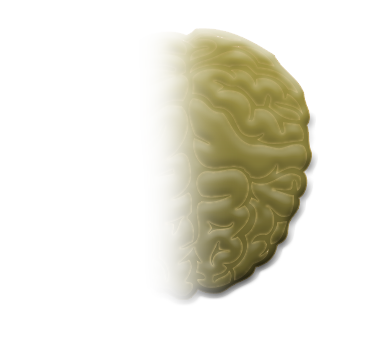
ACTIONSCRIPT
n.
Ac•tion•Script
[ak-shuhn-skript]
an object-oriented language originally developed by Macromedia Inc. (now owned by Adobe Systems). It is a dialect of ECMAScript (meaning it has the same syntax and semantics of the more widely known JavaScript), and is used primarily for the development of websites and software targeting the Adobe Flash Player platform, used on Web pages in the form of embedded SWF files.
EPISODE
n.
Ep•i•sode
[ep-uh-sohd]
Server-based software from Telestream for the Mac platform that transcodes video and audio between a broad range of video and audio formats for distribution to the web, broadcast, DVD, mobile phones & portable devices.
FLEX
n.
Flex
[fleks]
A software development kit (SDK) released by Adobe Systems for the development and deployment of cross-platform rich Internet applications based on the Adobe Flash platform.
JAVA
n.
Ja•va
[jah-vuh]
A programming language originally developed by James Gosling at Sun Microsystems (which is now a subsidiary of Oracle Corporation) and released in 1995 as a core component of Sun Microsystems' Java platform.
JAVASCRIPT
n.
Ja•va•Script
[jah-vuh-skript]
A prototype-based, object-oriented[6] scripting language that is dynamic, weakly typed and has first-class functions. It is also considered a functional programming language like Scheme and OCaml because it has closures and supports higher-order functions.
MY SQL
n.
My S Q L
[mi es kyu el]
A relational database management system (RDBMS) that runs as a server providing multi-user access to a number of databases. It is named after developer Michael Widenius' daughter, My. The SQL phrase stands for Structured Query Language.
PHP
n.
P•H•P
[pee aitch pee]
A general-purpose scripting language originally designed for web development to produce dynamic web pages. For this purpose, PHP code is embedded into the HTML source document and interpreted by a web server with a PHP processor module, which generates the web page document. It also has evolved to include a command-line interface capability and can be used in standalone graphical applications.
QUICKTIME
n.
Quick•Time
[kwik tahym]
An extensible proprietary multimedia framework developed by Apple Inc., capable of handling various formats of digital video, picture, sound, panoramic images, and interactivity. It is available for Mac OS classic (System 7 onwards), Mac OS X and Microsoft Windows operating systems.
XML
n.
X•M•L
[ex em el]
Extensible Markup Language, a metalanguage that allows users to define their own customized markup languages, especially in order to display documents on the World Wide Web.
AIR
n.
Air
[air]
Adobe Integrated Runtime (AIR), also known as Adobe AIR, is a cross-platform runtime environment developed by Adobe Systems for building rich Internet applications using Adobe Flash, Adobe Flex, HTML, or Ajax, that can be deployed as desktop applications.
CSS
n.
C•S•S
[see es es]
Cascading Style Sheets (CSS) is a style sheet language used to describe the presentation semantics (the look and formatting) of a document written in a markup language. Its most common application is to style web pages written in HTML and XHTML, but the language can also be applied to any kind of XML document, including plain XML, SVG and XUL.
DVD STUDIO PRO
n.
D•V•D Stu•di•o Pro
[dee vee dee stoo-dee-oh pro]
A high-end software tool published by Apple Inc. to allow users to create DVD masters to be sent out for replication at production houses. Its tight integration with other Apple applications allows users to take Final Cut Pro and Motion projects and render them into the DVD format without encoding to intermediary formats.
FLASH
n.
Flash
[flash]
A multimedia platform used to add animation, video, and interactivity to web pages and desktop applications. Flash is frequently used for advertisements, games and flash animations for broadcast. More recently, it has been positioned as a tool for "Rich Internet Applications" ("RIAs")
HTML
n.
H•T•M•L
[eych tee em el]
HyperText Markup Language is the predominant markup language for web pages. HTML elements are the basic building-blocks of webpages. HTML is written in the form of HTML elements consisting of tags, enclosed in angle brackets, within the web page content.
WATCHOUT
n.
Watch•out
[woch-out)]
A multi-screen digital presentation production and display software system that exploits the power of modern personal computer systems and uses a modular approach to deliver presentations of vast pixel counts.
AFTER EFFECTS
n.
Af•ter Ef•fects
[af-ter ih-fekts]
A digital motion graphics and compositing software published by Adobe Systems, used in the post-production process of filmmaking and television production. Its main uses are the origination of 2D and 2.5D animation, visual effects compositing and finishing (image adjustement, color correction etc.).
FINAL CUT PRO
n.
Fi•nal Cut Pro
[fahyn-l kuht pro]
A non-linear video editing software developed by Macromedia Inc. and then Apple Inc. The most recent version, Final Cut Pro X, runs on Mac personal computers powered by Mac OS X version 10.6.7 or later and using Intel processors. The software allows users to log and transfer video onto a hard drive (internal or external), where it can be edited, processed, and output to a wide variety of formats.
ILLUSTRATOR
n.
Il•lu•stra•tor
[il-uh-strey-ter]
A vector graphics editort developed and marketed by Adobe Systems. Illustrator is similar in scope, intended market, and functionality to its competitorst, CorelDraw and Macromedia FreeHand.
LOGIC PRO
n.
Lo•gic Pro
[loj-ik pro]
A hybrid 32 / 64 bit digital audio workstation and MIDI sequencer software application for the Mac OS X platform. Originally created by German software developer Emagic, Logic Pro became an Apple product when Apple bought Emagic in 2002. Logic Pro is part of Apple's Logic Studio bundle of professional music applications.
PHOTOSHOP
n.
Pho•to•shop
[foh-toh-shop]
A graphics editing program developed and published by Adobe Systems Incorporated.
WHERE'S WALDO
n.
Where's•Waldo
[wairs wall-doe]
A series of children's books created by British illustrator Martin Handford. The books consist of a series of detailed double-page spread illustrations depicting dozens or more people doing a variety of amusing things at a given location. Readers are challenged to find a character named Wally hidden in the group.



